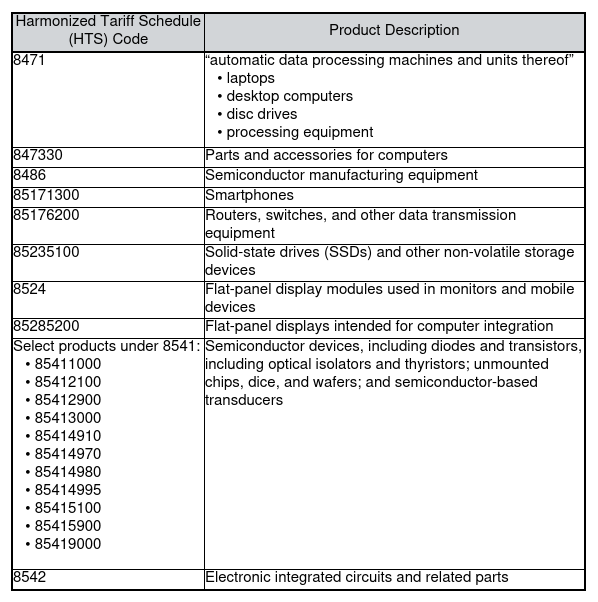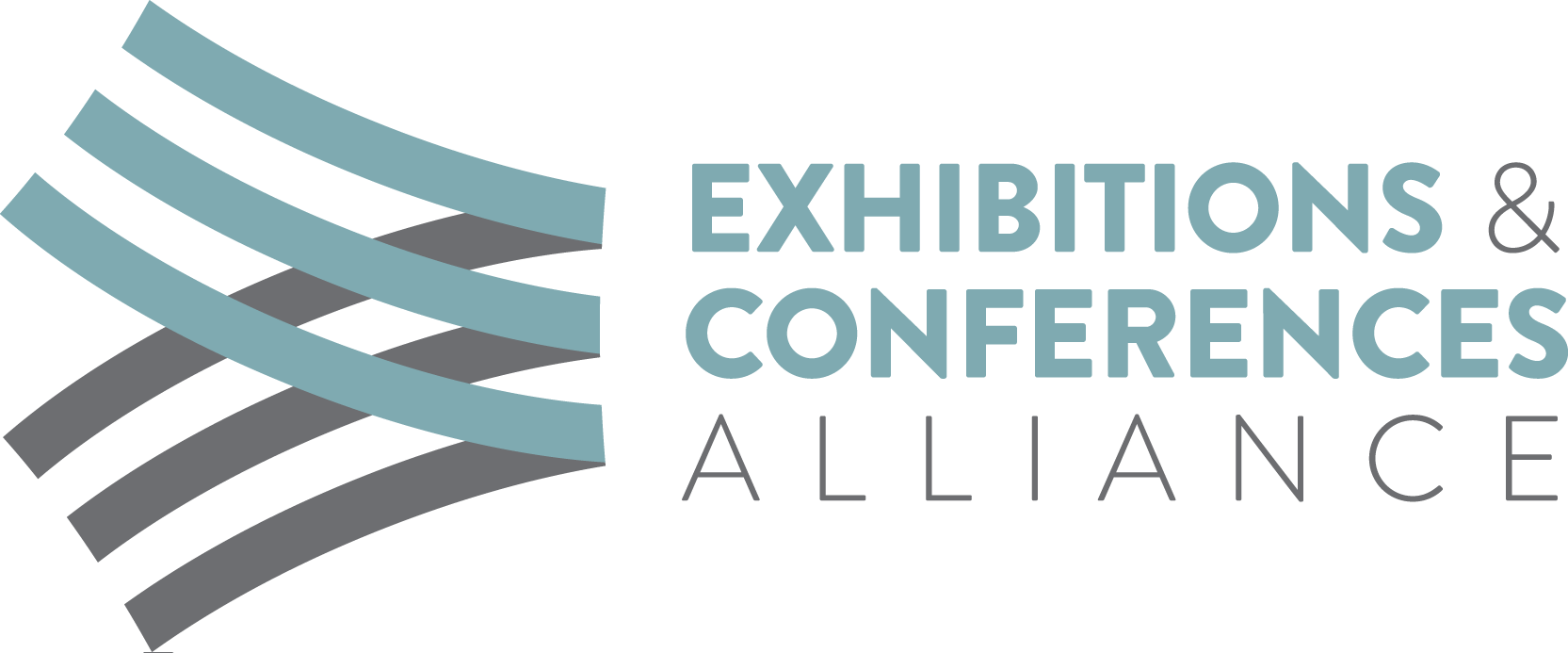ECA and its public policy counsel, Brownstein Hyatt Farber Schreck, LLP, have prepared the following detailed analysis of recent tariff developments and what they mean for the business and professional events industry. Please bookmark this page for future updates as circumstances warrant.
UPDATE: APRIL 18, 2025
On April 17, the Office of the United States Trade Representative took action on the "Section 301 Investigation of China’s Targeting of the Maritime, Logistics, and Shipbuilding Sectors for Dominance to eliminate China’s acts, policies, and practices targeting the maritime, logistics, and shipbuilding sectors for dominance."
For the first 180 days, applicable fees will be set a zero.
In the first phase actions, after 180 days:
- Fees on vessel owners and operators of China based on net tonnage per U.S. voyage, increasing incrementally over the following years - the fee would start at $50/NT in 180 days and increases by $30/NT per year over the next three years;
- Fees on operators of Chinese-built ships based on net tonnage or containers, increasing incrementally over the following years - the fee would start at $18/NT or $120 per container in 180 days, and would increase by $5/NT per year, or the same proportional yearly amount per container (e.g., in year 2, to $154 per container), over the next three years; and
- To incentivize U.S.-built car carrier vessels, fees on foreign-built car carrier vessels based on their capacity - the fee would start at $150 per Car Equivalent Unit (CEU) capacity of the entering non-U.S. built vessel in 180 days.
The second phase actions will not begin for 3 years:
- To incentivize U.S.-built liquified natural gas (LNG) vessels, limited restrictions on transporting LNG via foreign vessels. These restrictions will increase incrementally over 22 years.
Furthermore,
- Fees on Chinese vessel operators and owners and Chinese-built ships are assessed per U.S. voyage, not per port call. These fees are imposed on a given ship no more than five times per year.
- Fees are not “stacked,” meaning only one fee will be assessed per U.S. voyage.
- Upon proof of order of a U.S.-built vessel, fees or restrictions on an equivalent non-U.S.-built vessel are suspended for up to three years.
- Fees on Chinese-built ships effectively do not cover Great Lakes or Caribbean shipping, shipping to and from U.S. territories, or bulk commodity exports on ships that arrive in the United States empty.
UPDATE: APRIL 16, 2025
On April 11, President Donald Trump issued a memorandum to clarify that smartphones and certain other electronics are not subject to the now-125% “reciprocal” tariff on imports from China or the 10% “baseline” tariff on imports from most other trading partners. Customs and Border Protection issued a related guidance late that evening. Specific products covered by the April 11 memorandum are listed below.
The memorandum spares covered imports from the “reciprocal” and “baseline” tariffs by expanding an existing carveout for semiconductors. However, the president and Commerce Secretary Howard Lutnick have indicated that these goods will soon be subject to sector-specific “reshoring” tariffs levied under Section 232 of the Trade Expansion Act of 1962. The administration began the process of imposing these tariffs on April 14.
The products listed in the memorandum remain subject to the 20% tariff on imports from China imposed in response to the fentanyl crisis. Imports of these products from Canada and Mexico that do not qualify under the United States-Mexico-Canada Agreement (USMCA) also remain subject to a 25% tariff.

UPDATE: APRIL 10, 2025
On April 9, President Donald Trump signed an executive order (EO) to (1) pause the imposition of the higher country-specific reciprocal tariffs on all countries except China while leaving the broad 10% reciprocal tariff rate in effect and (2) further increase the reciprocal duty rate imposed on Chinese goods.
The EO suspends the country-specific reciprocal tariffs, which went into effect on April 9 at 12:01 a.m. EDT, for all countries outlined in Annex I, except China.- These country-specific reciprocal tariffs (EO 14257) have been paused until 12:01 a.m. EDT on July 9, 2025.
- The baseline across-the-board 10% tariff imposed on all countries remains in place.
- The pause will apply to goods entered for consumption, or withdrawn from warehouse for consumption, on or after 12:01 a.m. EDT on April 10, 2025.
- Separately, the International Emergency Economic Powers Act (IEEPA) tariffs imposed on Canada (25%), Mexico (25%) and China (20%) remain in effect.
- This amended duty rate will continue to apply on top of other existing duties, including the 20% fentanyl tariffs, effectively bringing the tariff rate on Chinese goods to 145%. Select Chinese goods are also subject to Section 301 tariffs, which will further increase duty rates.
- While President Trump indicated in an April 9 post on Truth Social that the increased reciprocal tariff would take effect “immediately,” the EO clarifies that the higher rate formally went into effect at 12:01 a.m. EDT on April 10, 2025.
- The exclusions to the reciprocal tariffs enumerated in EO 14257 remain in effect and are outlined below.
UPDATE: APRIL 8, 2025
On April 8, President Donald Trump signed an executive order (EO) to further increase the reciprocal duty rate imposed on Chinese goods.
Today’s EO amends EO 14257, issued on April 2, to raise the reciprocal tariff on Chinese goods from 34% to 84%
- This amended duty rate will continue to apply on top of other existing duties, including the 20% fentanyl tariffs, effectively bringing the tariff rate on Chinese goods to 104%. Select Chinese goods are also subject to Section 301 tariffs, which will further increase duty rates.
- This increased reciprocal tariff will go into effect as previously scheduled on April 9 at 12:01 a.m. EDT.
- The exclusions to the reciprocal tariffs enumerated in EO 14257 remain in effect and are outlined below.
These changes are a response to the April 4 announcement from China’s State Council Tariff Commission that it would impose a 34% tariff on American goods, matching the original U.S. reciprocal duty rate, among other retaliatory actions.
UPDATE: APRIL 2, 2025
On April 2, President Donald Trump issued an executive order (EO) to impose reciprocal tariffs on select countries.
Executive Order Imposing Reciprocal and Baseline Tariffs (Executive Order, Fact Sheet)
- Imposed Under IEEPA. The president invoked the International Emergency Economic Powers Act (IEEPA, 50 U.S. Code § 1701) to levy the reciprocal tariffs, citing “conditions reflected in large and persistent annual U.S. goods trade deficits.” IEEPA was also the mechanism used to impose the existing fentanyl- and immigration-based tariffs levied on Mexico, Canada and China in February.
- Initial 10% Tariff. Starting on April 5 at 12:01 a.m. EDT, the EO imposes a baseline across-the-board 10% tariff on all countries; as noted below, these are imposed on top of all existing duty rates with the exception of goods from Mexico and Canada.
- Country-Specific Tariff Rates. Starting on April 9 at 12:01 a.m. EDT, a country-specific reciprocal tariff regime will replace the baseline 10% tariffs for certain countries. The reciprocal tariffs regime effectively identifies a tariff charged to the United States by a specific country that includes “currency manipulation and trade barriers”; that rate is halved to determine the “discounted reciprocal tariff” that the United States will impose on the country on April 9. Country-specific rates are outlined in Annex I.
- After the EO’s release, the White House later confirmed that the reciprocal tariffs are based on the large trade deficits these countries run with the United States; trade analysts argue that the formula is simply the trade deficit with a specific country divided by the country’s exports to the United States. The Office of the U.S. Trade Representative (USTR) subsequently released a methodology for calculating reciprocal tariffs, indicating that “the tariff rates that would drive bilateral trade deficits to zero were computed.”
- Exemptions. The reciprocal/baseline tariff regime currently does not apply to the following:
- Services. Reciprocal tariffs currently do not apply to services contracts (e.g., professional services) or similar arrangements. The administration’s focus on goods over services reflects President Trump’s broader goal of revitalizing U.S. manufacturing.
- Canada and Mexico. The two countries are not subject to the reciprocal or baseline tariffs. For both nations, the existing fentanyl-based tariffs — and United States-Mexico-Canada Agreement (USMCA) exemptions — continue to apply. If the fentanyl-based tariffs are revoked, the reciprocal EO states that non-USMCA goods will be subject to a 12% tariff.
- Steel, aluminum, autos, and other sectors subject to current or future Section 232 “Reshoring” tariffs. The EO exempts products subject to current and future sector-specific “reshoring” tariffs implemented under Section 232 of the Trade Expansion Act of 1962. This currently includes steel, aluminum, and autos. Copper, pharmaceuticals, lumber, and semiconductors are also not subject to these tariffs, heavily implying that they will be subject to tariffs under Section 232 in the future. The EO also states that other goods subjected to Section 232 tariffs in the future will be exempted from these reciprocal/baseline tariffs.
- Annex II. The EO also exempts goods listed in an “Annex II.” These are largely agricultural, pharmaceutical, and industrial inputs.
- Layering Existing Tariffs. The reciprocal tariffs will be applied in addition to all existing duty rates on foreign imports. For example, a 20% tariff is in effect on all goods imported from China. Thus, the minimum duty rate applied to Chinese imports on April 9 will be 54%. Select Chinese goods are also subject to Section 301 tariffs, which will further increase duty rates.
- Outlook. The secretary of commerce and USTR can recommend additional action if the tariffs are not considered effective in resolving the “emergency conditions,” and the tariffs can also be altered by the president via additional executive actions.
Outlook for Tariff Actions
This executive action does not mark the end of tariff announcements, and the duties outlined in the chart below may shift in response to negotiations between the United States and impacted companies over the coming days and weeks. On March 24, President Donald Trump issued an executive order (EO) to direct the secretary of state, in consultation with other agency heads, to impose a 25% tariff on all goods from countries that import Venezuelan oil “directly or indirectly.” The imposition of tariffs will be based on an investigation conducted by the secretary of commerce; however, the secretary of state is granted the authority to impose tariffs “in his discretion.”
In addition, President Trump has indicated he will announce sector-specific tariffs intended to force manufacturers to shift production of targeted goods to the United States. These tariffs will target specific goods or industries, like pharmaceuticals and semiconductors, and are expected in the coming months. The sector-specific tariffs will likely be levied under Section 232 of the Trade Expansion Act of 1962 and either amend an existing tariff or direct a Commerce Department investigation.
Below outlines the tariffs charged by each country on U.S. goods and the reciprocal tariffs levied by the United States:

